The Mach One electric skateboard from Australian startup Radium Performance represents a dramatic evolution in personal electric transportation. Unlike typical electric skateboards designed for casual commuting, this high-performance machine brings racing technology and design principles to the streets. With Formula 1 inspiration, carbon fiber construction, and remarkable speed capabilities, the Mach One pushes the boundaries of what’s possible in electric skateboard design.
Race-Inspired Performance: Blistering Speed and Acceleration
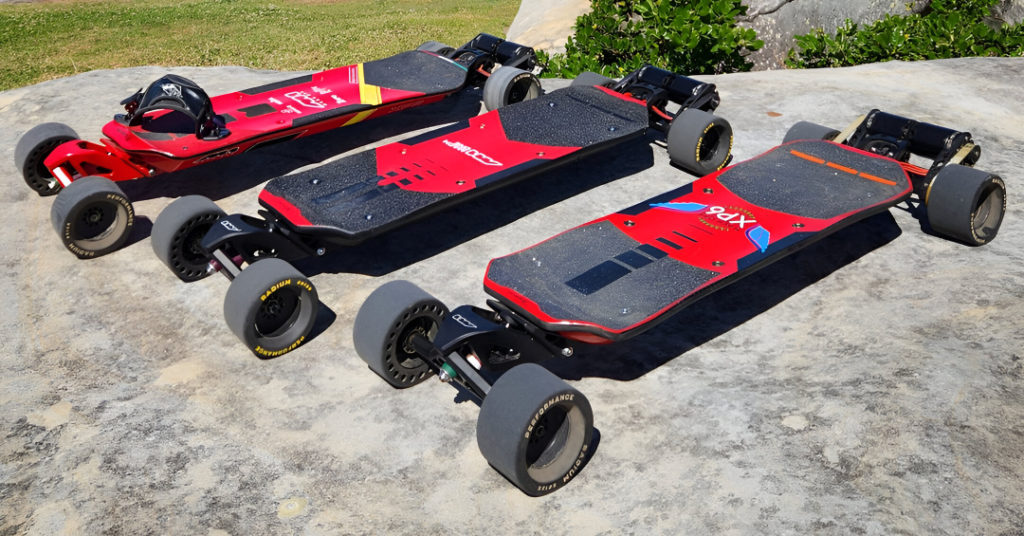
The Mach One immediately sets itself apart from typical electric skateboards with its extraordinary performance capabilities. Powered by dual motors delivering a combined 8,000 watts to the rear wheels, this board can reach a top speed of 45 mph (72 km/h) – fast enough to keep pace with city traffic and far beyond the capabilities of conventional electric skateboards.
The acceleration is equally impressive, with the ability to go from 0 to 30 mph (48 km/h) in just three seconds. This rapid acceleration puts the Mach One in the territory of high-performance motorcycles rather than typical personal electric vehicles. Such capability isn’t just about thrills – it provides riders with the confidence to navigate traffic situations where quick acceleration might be necessary for safety.
While this extreme performance clearly positions the Mach One as a specialized product for enthusiasts rather than casual commuters, it demonstrates how electric propulsion technology has matured to the point where small, lightweight vehicles can deliver truly impressive performance. Some people may opt for best hoverboards for everyday use, but this skateboard offers a thrilling and capable alternative for high-speed commuting.
Torque Vectoring: Racing Technology for Better Control
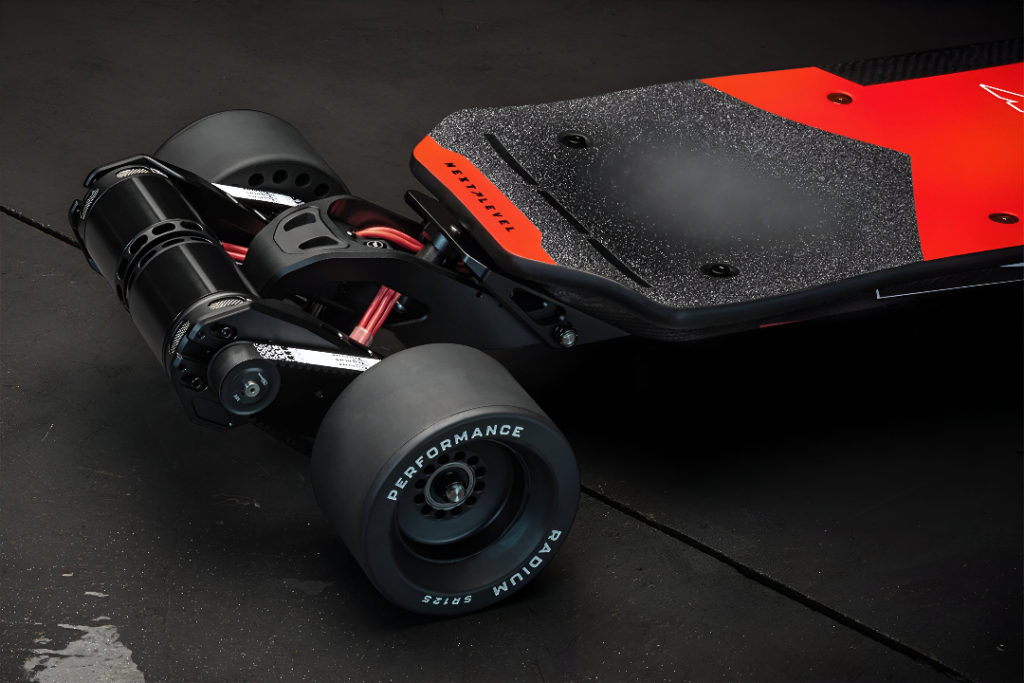
Perhaps the most innovative aspect of the Mach One is its implementation of torque vectoring – technology normally found in high-performance sports cars and Formula 1 racing.
The system automatically delivers more power to whichever rear wheel has more weight over it during a turn. When cornering on any vehicle, weight naturally shifts to the outside of the turn. By increasing power to this loaded wheel, the torque vectoring system maximizes traction precisely where it’s needed most. This allows riders to accelerate out of corners earlier and with more confidence, much like a racing driver would in a high-performance car.
This “power-steering-like” system doesn’t just improve performance – it potentially enhances safety by reducing the likelihood of wheel slip during aggressive cornering. By adapting power delivery based on real-time traction conditions, the Mach One provides a more controlled and predictable riding experience despite its extreme performance capabilities.
Advanced Materials and Construction
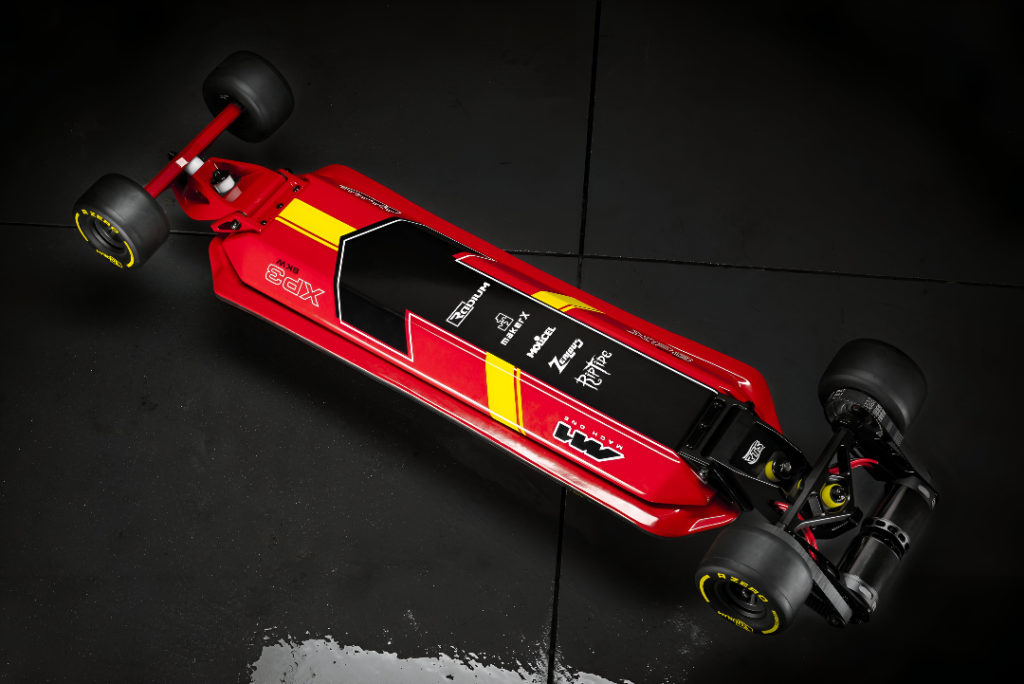
The Mach One’s construction reflects its performance aspirations, utilizing materials typically associated with racing vehicles rather than personal transportation devices. The most notable element is the 10-inch (250-mm) wide carbon fiber deck, which provides an optimal balance of strength and light weight. Unlike traditional wooden skateboard decks, this carbon structure is hollow, cleverly housing the battery pack and electronic components within its structure.
This integration of components into the deck itself contributes to the board’s clean lines and low center of gravity, both critical factors for stability at high speeds. The hollow design also allows for easy access to internal components – users can remove the top panel by taking out eight screws, making upgrades and servicing straightforward.
The drive system also benefits from racing-inspired materials, with special steel-fiber-reinforced urethane drive belts connecting the motors to the solid rubber wheels. Radium claims these are the toughest belts used on any electric skateboard, designed to handle the substantial torque produced by the dual motors without premature wear or failure.
Suspension System: Comfort Meets Performance
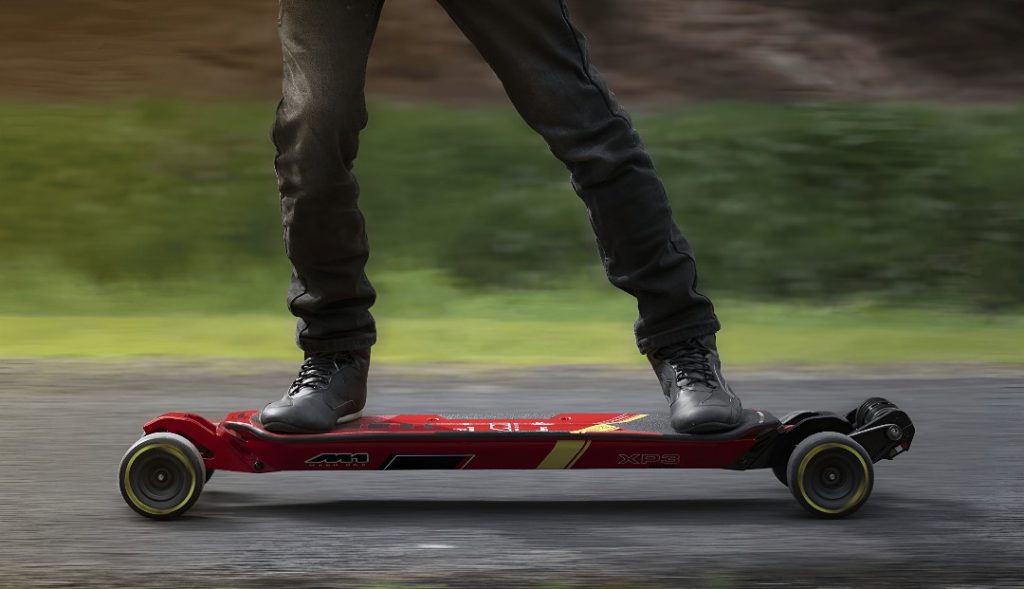
Recognizing that high speeds require appropriate suspension to maintain control on imperfect surfaces, the Mach One features an innovative suspension system rarely seen on electric skateboards. Both the front and rear trucks connect to the deck via single swing arms – one arm per truck.
This single swing arm design, reminiscent of some motorcycle suspension systems, allows for substantial wheel travel while maintaining stability. The suspension helps absorb impacts from road imperfections that might otherwise unsettle the board at high speeds, keeping the wheels in contact with the road surface for consistent power delivery and braking.
The suspension system represents a significant advancement over the simple bushing-based flex found in most skateboards. By providing more controlled wheel movement independent of the deck, it allows riders to maintain better control over uneven terrain while minimizing the jarring impacts that can make long rides uncomfortable. This sophisticated approach to suspension demonstrates Radium’s focus on creating a board that performs well across varied conditions, not just on perfectly smooth surfaces.
Power Management and User Control
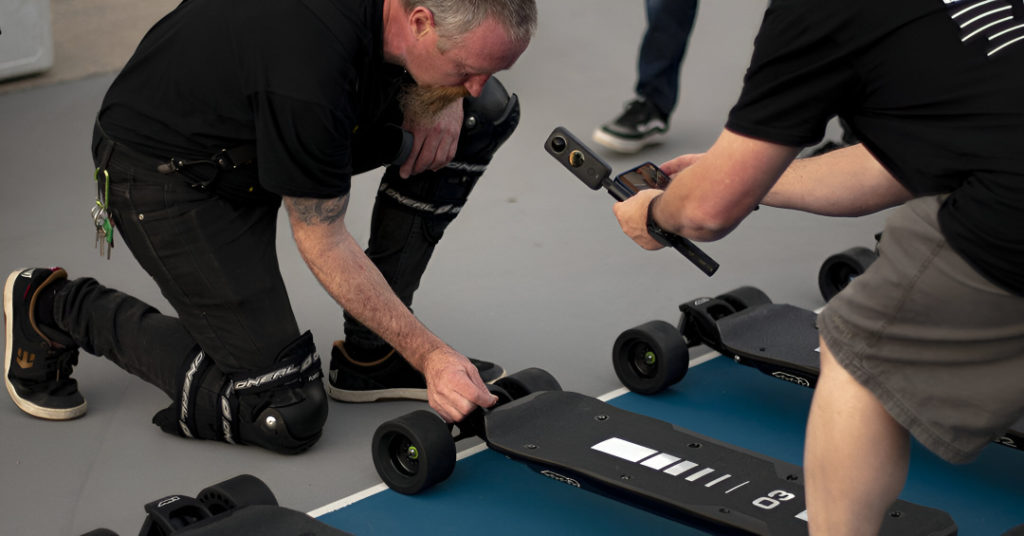
Managing the Mach One’s considerable power requires sophisticated control systems. Riders control their speed using a wireless remote, providing precise throttle and braking control without physical connections that could restrict movement or create failure points.
Beyond basic speed control, Radium has developed a companion app that allows riders to customize the board’s performance characteristics to their preferences. This might include adjusting acceleration curves, setting top speed limits, or modifying the torque vectoring behavior to match different riding conditions or personal skill levels.
The 48V/1,089-Wh lithium battery provides up to 30 miles (48 km) of range on a single two-hour charge – impressive considering the board’s performance capabilities. This balance of power and range makes the Mach One practical for both short thrilling rides and longer journeys.
At 17 kg (37.5 lb), the board is substantial but still manageable for transport when not riding. Currently priced at AU$5,298 (approximately US$3,173), with prices set to increase after the first 100 orders, The Mach One positions itself as a premium product for enthusiasts who value performance and engineering excellence in extraordinary personal vehicles that seem almost too incredible to be real.




























